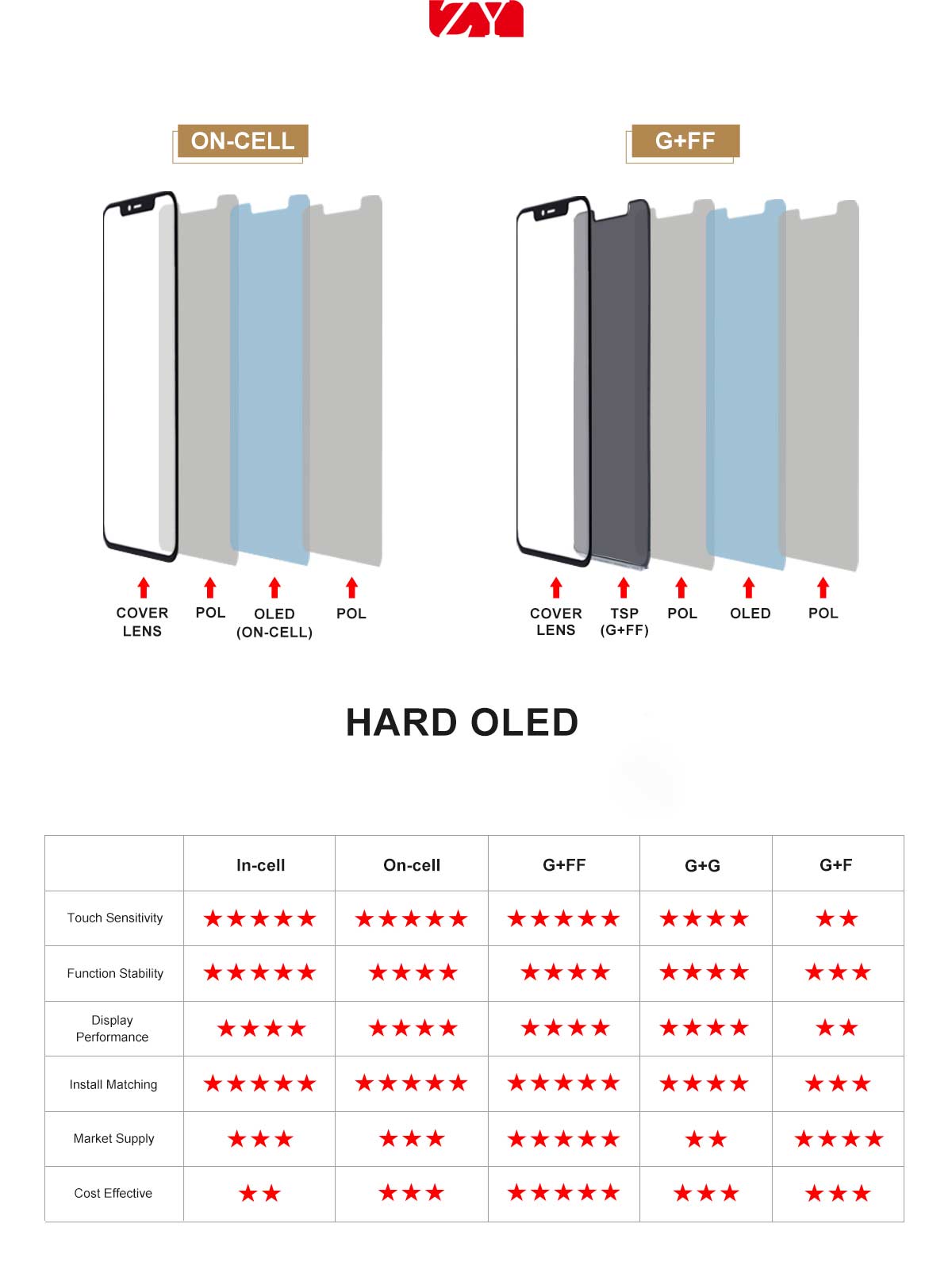
In the iPhone OLED screen replacement market, there are Hard OLED and Soft OLED. Let's compare the two manufacturing processes of iPhone rigid OLED screen G+FF and On-Cell. ZY Hard OLED uses the G+FF manufacturing process.
What is the On-cell process?
In the In-cell vs On-cell process comparison article, the formation process of the On-cell process is described in detail. The On-cell process comes from the touch screen production process developed by panel manufacturers. In the On-cell process, the TP layer is embedded in the OLED module. The TP layer is embedded in the OLED surface using the On-cell process, and the TP layer embedded inside the LCD screen is the In-cell process.
What is the G+FF process?
The G+FF process is a process developed by touch screen manufacturers. Touch screen manufacturers currently have four processes: OGS/G+G/G+F/G+FF, of which G+FF is the most used in mobile phone screens. It consists of a toughened cover plate and two layers of ITO film, and the two layers of film Film are connected by OCA.

G+FF screen advantages and disadvantages
G+FF uses a thin film as the signal function layer of the ITO carrier, and the supply of raw materials is stable and the stability is high. The light transmittance is above 91%, there is no polarization problem and rainbow pattern. 32 touch channels, touch-sensitive and smooth. The disadvantage of G+FF is that the service life of the film is average, about 2 to 3 years. In the mobile phone repair industry, the use time of the G+FF screen is sufficient.
On-cell screen advantages and disadvantages
In the Apple after-sales market, there is more demand in the iPhone Incell LCD market. On-cell products provided by mobile phone display manufacturers are scarce, and the number of manufacturers to choose from is also small. Coupled with the low process technology of On-cell external processing, the quality of the On-cell screen is not high. On-cell Hard OLED is gradually moving towards the development trend of low quality and low price. The advantages of the On-cell screen are similar to those of the In-cell. The touch sensing layer is integrated into the display module to make the screen thinner.

Come to HENGWEI ye and choose what you like
Mobile screen,We create a series of high-quality mobile screens for you
